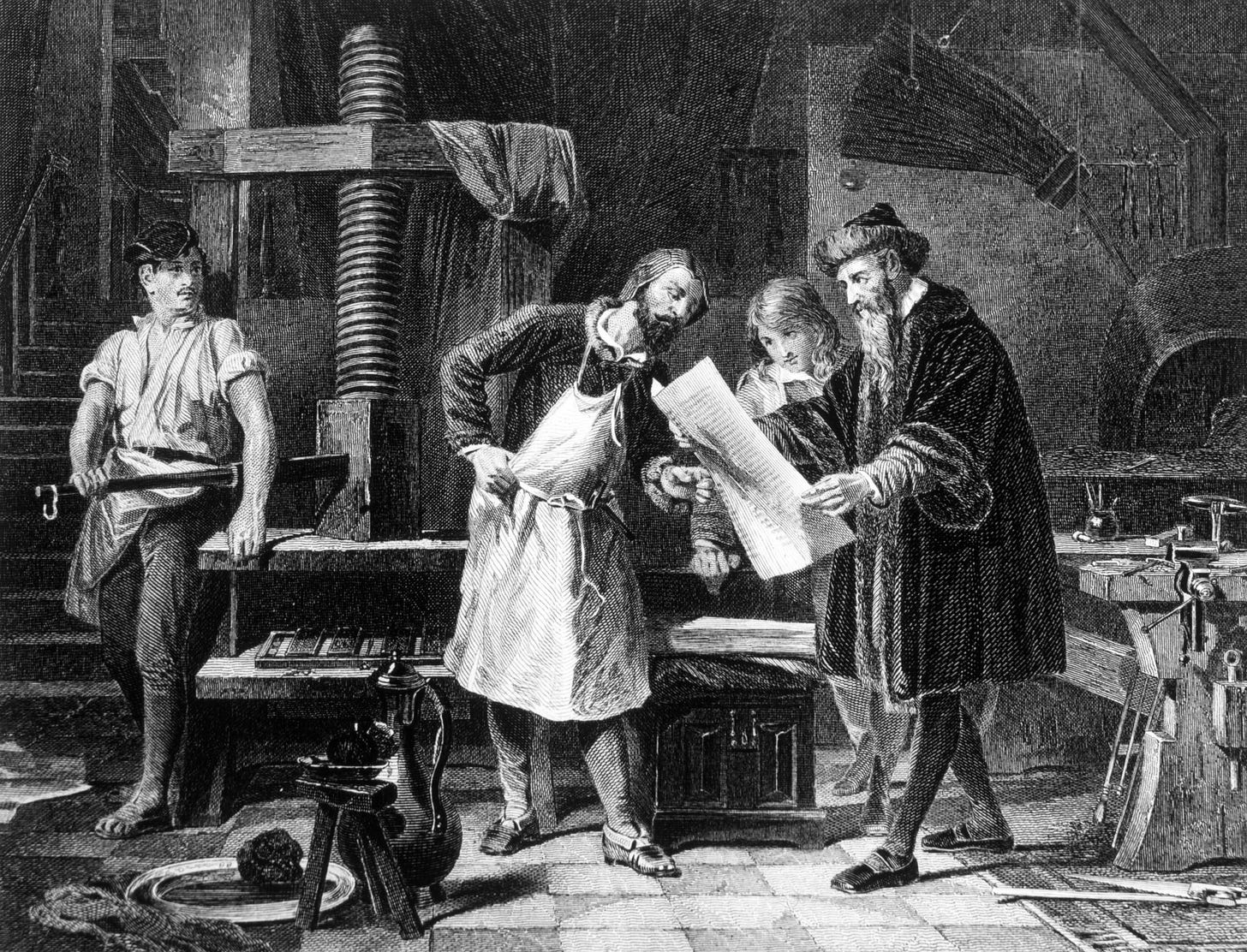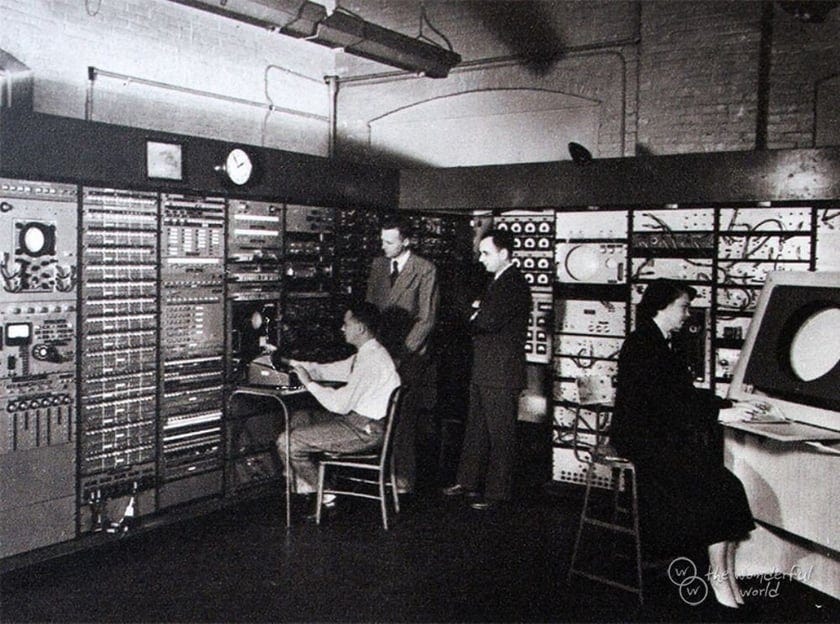From Gutenberg to GPT
How six centuries of technological disruption reveal the timeless patterns of communication revolution
Welcome to the second edition of Comms Evolution, where we unpack how communication has evolved over millennia—and the fundamental principles that lie beneath.
Where It All Started
In 1440, Johannes Gutenberg changed everything.
Not immediately—the printing press seemed like a simple mechanical improvement: a faster way to reproduce text than hand-copying manuscripts. What it actually created was the first mass communication medium in human history.
The parallels to today aren't coincidental. They're inevitable.
Every major communication breakthrough follows the same pattern: initial resistance, gradual adoption, and ultimately, complete transformation of how humans organize information, power, and society itself.
Understanding this pattern isn't just historical curiosity—it's strategic insight for navigating our current landscape.
The Gutenberg Principle
When communication technology eliminates scarcity, it redistributes power.
Before the printing press, information was scarce and expensive. Books required months to produce by hand. Knowledge was literally locked away in monasteries and universities, accessible only to religious and academic elites.
Gutenberg's innovation didn't just make books cheaper—it made knowledge abundant.
Within fifty years, over 20 million books had been printed across Europe. Ideas that once took decades to spread could reach thousands of people simultaneously. The Protestant Reformation, the Scientific Revolution, and the Renaissance weren't just intellectual movements—they were direct consequences of information becoming more accessible.
The Foretold Prophecy
Every transformative communication medium since has followed this same sequence.
The Telegraph (1840s)
The telegraph eliminated the constraint of physical distance. Messages that once took weeks to deliver via horseback could arrive in minutes. This didn't just change communication—it created modern financial markets, coordinated railroad systems, and enabled the first truly global news networks.
The Radio (1920s)
The radio broke the literacy barrier to mass communication. For the first time, information could reach anyone with ears, regardless of education level. This democratized access to news, entertainment, and political messaging—with consequences we're still grappling with.
The Internet (1960s)
The internet eliminated the distinction between information consumer and producer. Anyone could publish, distribute, and access information globally. This created entirely new economic models, social structures, and power dynamics.
Each disruption followed the same pattern:
Initial dismissal by incumbents, rapid adoption by early adapters, and eventual transformation of entire social and economic systems.
The AI Inflection Point
Artificial Intelligence represents the latest—and potentially most significant—iteration of this pattern.
Previous communication revolutions changed how information moved. AI changes how information is processed, synthesized, and created.
For the first time in human history, machines can generate "human-quality" communication at infinite scale. This isn't just about ChatGPT writing emails—it's about fundamentally altering the relationship between human intelligence and information processing.
The Business Implications
Each communication revolution created winners and losers based on how quickly organizations adapted to new realities.
The printing press eliminated the scribes' monopoly but created the publishing industry.
The telegraph destroyed the Pony Express but built Western Union.
The internet killed traditional media business models but created Google, Facebook, and Amazon.
The pattern is consistent: organizations that cling to previous-generation assumptions get displaced by those who understand and leverage new-generation possibilities.
The Real Question
Here's what most business leaders get wrong about communication evolution: they focus on the technology instead of the pattern.
The specific technology matters less than understanding how communication revolutions redistribute power, attention, and value creation.
The strategic question isn't "How do we use AI?"
It's "How do we position ourselves advantageously as AI redistributes power?"
Organizations asking the former will optimize their existing approaches with new tools. Organizations asking the latter will redesign their fundamental communication strategy around new realities.
The Timeless Principles
Despite technological change, certain communication principles remain constant:
Scarcity creates value: In every era, whatever becomes scarce becomes valuable. When information was scarce, libraries were powerful. When attention becomes scarce, curation becomes powerful.
Trust compounds over time: Regardless of medium, sustained relationships require consistent value delivery. This was true for medieval guilds and remains true for modern brands.
Distribution determines reach: The most brilliant ideas remain powerless without effective distribution. Gutenberg understood this—it's why he was a businessman, not just an inventor.
Context is everything: The same message carries different weight depending on who delivers it, where, and when. This human element remains irreplaceable across all technological advances.
The Current Situation
We're living through a communication revolution as significant as Gutenberg's printing press. The question isn't whether AI will transform how business communicate—it's whether your organization will adapt to benefit rather than be displaced.
The winners won't be those with the best technology. They'll be those who best understand how dynamics are shifting and position themselves accordingly.
Just as Gutenberg didn't just build a better printing method but created an entirely new communication paradigm, today's strategic advantage goes to those who recognize we're not just getting better tools—we're entering a fundamentally different era.
The patterns are clear. The principles are timeless.
The only question is: will you be ready?









Great write up. I’m very aligned with how you presented this and how it relates to the current shift.
“Every major communication breakthrough follows the same pattern: initial resistance, gradual adoption, and ultimately, complete transformation of how humans organize information, power, and society itself.”
Oddly I saw this as a full heroes journey arc. With AI, we’re collectively in the “refusal of the call” stage. Gonna be a wild ride!
Love this. Very well written.